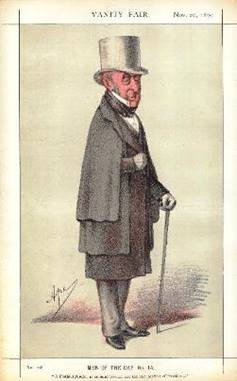 Geologist and science writer Nina Morgan wonders what to do with freebies
Geologist and science writer Nina Morgan wonders what to do with freebies
If you've ever attended a conference, you'll know what I'm talking about. Those goody-bags filled with leaflets, brochures and various small 'gifts', some useful, some not, emblazoned with sponsors' names. Most of us find it easy enough to dispose of any unwanted items. But spare a thought for those who must not only graciously accept, but also find a place to display, these sometimes unsolicited gifts.
In his garden at Highgrove, near Tetbury in Gloucestershire, HRH Prince Charles has come up with one answer. The large collection of busts he has received over the years representing people he admires, along with a significant number of busts of himself at various stages of his life, are cleverly and artistically displayed around his lovely 15-acre garden. Presumably when he receives gifts while travelling abroad, his staff is responsible for ensuring their safe transport back to the UK.
But this option is not open to everyone. Spare a thought, then, for Roderick Murchison (1792-1871, picture) who, while on a geological expedition in 1843, was presented with a gift from the Emperor of Russia in recognition of Murchison's geological skills in interpreting the geology of his country. The gift, described by Murchison's biographer, geologist and author Archibald Geikie (1835-1924) consisted of:
"... a great vase of Siberian aventurine [a variety of quartz], four feet high and six feet in circumference.."
The vase, which rested on a massive porphyry pedestal bearing the inscription:
Gratia Imperatoris Totium Rossiæ
Roderico Murchison
Geologiæ Russiæ Exploratori
MDCCCXLIII
which in turn rested on a steel plate an inscription in Russian which translates as:
To the Geologist Murchison
In Testimony of the Particular Esteem
The Administration of Miners of Russia
It was truly a rare and unusual gift. As Geikie notes:
"Owing to the difficulty of obtaining so large a block, and of polishing such a hard material, only one other similar vase has been made, viz., that presented to Humboldt, and now in the Royal Museum, Berlin."
But far from feeling inconvenienced by this gift, Murchison appears to have been both pleased and sanguine. He noted in his journal:
"How shall I ever render my work worthy of such a largess!! So now to bed to sleep over my honours."
Acknowledgements
Sources for this vignette include
The Heyday of Natural History by Lynn Barber, first published in 1980 by Jonathan Cape, and
Life of Sir Roderick Impey Murchison, vol 2, published by John Murray, London, 1875.
* Nina Morgan is a geologist and science writer based near Oxford. Her latest book, The Geology of Oxford Gravestones, is available via www.gravestonegeology.uk